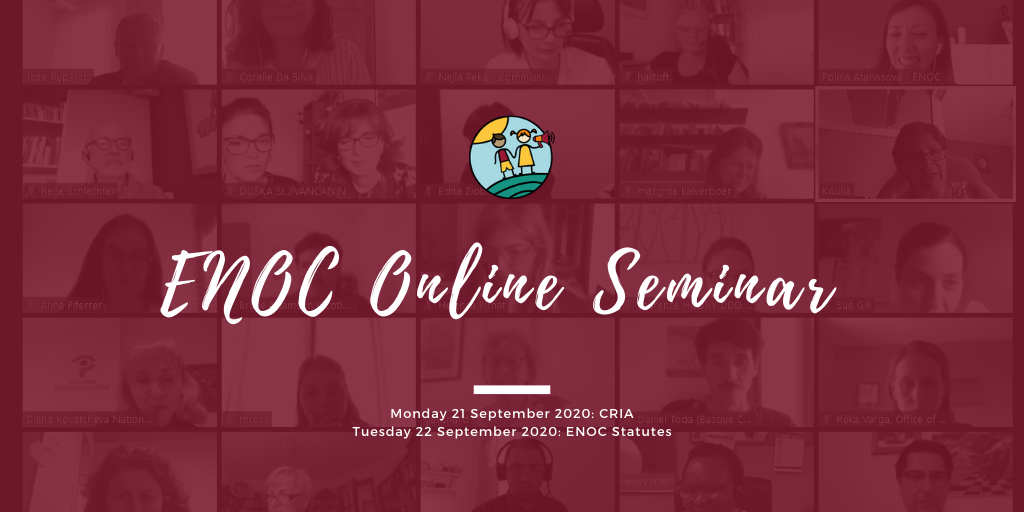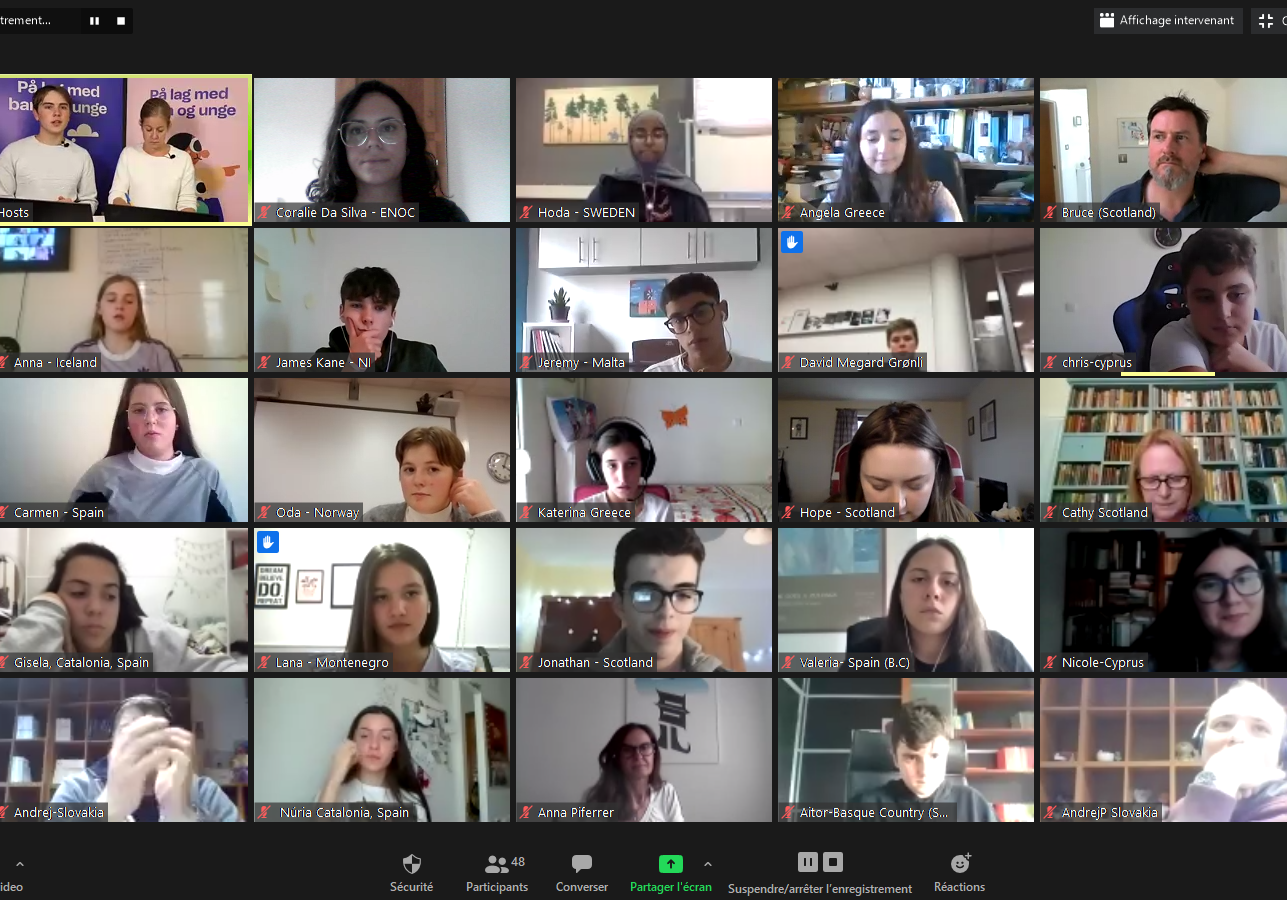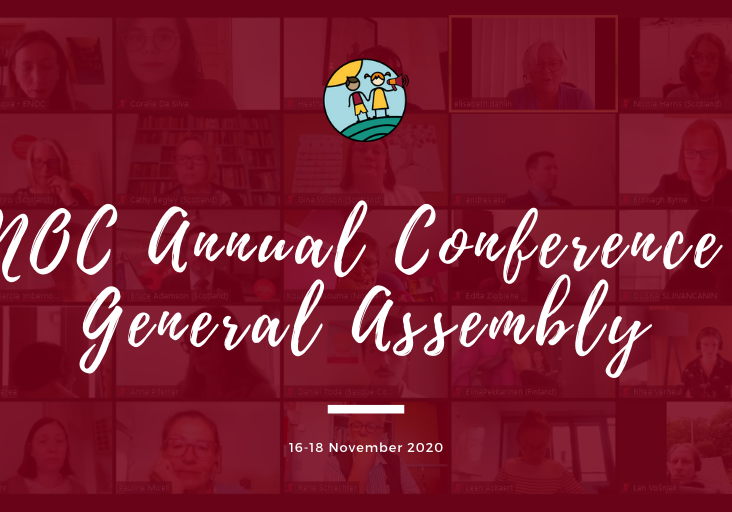“Child Rights Impact Assessment”
2020 Annual Theme
-
ENOC Synthesis Report
-
ENOC Position Statement English, French, Spanish, Greek and Norwegian version
-
ENOC Common Framework of Reference English, Spanish, Norwegian, and Portuguese version
-
ENOC Template for undertaking a CRIA
Child Rights Impact Assessment (CRIA) examines the potential impacts on children and young people of laws, policies, budget decisions, programmes and services as they are being developed and, if necessary, suggests ways to avoid or mitigate any negative impacts. This is done prior to the decision or action being set in place.
Child Rights Impact Evaluation (CRIE) provides an opportunity to consider the intended or unintended effect legislative changes, budget decisions, policies, programmes or services have had on children and young people’s rights. Where necessary, the CRIE can propose what changes would be needed to ensure the measure respects children’s rights and complies with the UNCRC. This is done after a decision has been made or an action has been taken.
CRIA and CRIE processes focus on how children’s rights may be affected by the decisions and actions of governments, institutions and others in the areas of law, policy and practice. Impacts are measured against the rights set out in the UNCRC, its Optional Protocols, and other international human rights treaties.
ENOC Common framework of reference - November 2020
In 2020, ENOC worked extensively on Child Rights Impact Assessment (CRIA), which is a key mechanism for implementing the UN Convention on the Rights of the Child (UNCRC) and a crucial tool for advancing children’s rights. The use of CRIA supports a systematic assessment and communication of the impact of a proposal or measure on the rights, needs and interests of children and young people. The need to introduce a continuous process of CRIA has been recommended by the UN Committee on the Rights of the Child in several of its General Comments. In its General Comment No.5 on the General Measures of Implementation, the UN Committee on the Rights of the Child says: “Ensuring that the best interests of the child are a primary consideration in all actions concerning children (art. 3 (1)), and that all the provisions of the Convention are respected in legislation and policy development and delivery at all levels of government demands a continuous process of child impact assessment (predicting the impact of any proposed law, policy or budgetary allocation which affects children and the enjoyment of their rights) and child impact evaluation (evaluating the actual impact of implementation)”.
A special Working Group, chaired by the Office of the Children and Young People’s Commissioner Scotland, led the work on the priority theme supported by Lisa Payne, an independent expert advisor on CRIA. The working group launched a special questionnaire to map the situation regarding CRIA within the membership and collected feedback from 30 ENOC members from across Europe. Members' contributions have been collated and analysed in a Synthesis Report. Based on the findings of the Synthesis Report, an exchange of views between ENOC members and recognized international experts on CRIA aiming at informing the preliminary terms of the ENOC position statement on the same theme took place on the occasion of a digital ENOC working Seminar on 21 September 2020.
In parallel and in the framework of the ENYA (European Network of Young Advisors) child participation project, children and young people from across Europe expressed views on CRIA through a thematic case study (rights of LGBTIQ+ children) and came up with specific recommendations that have been incorporated in the ENOC Statement on CRIA. Young people from 13 countries/regions participated in an ENYA online Forum “Let’s talk young, Let’s talk about children’s rights in decision-making!” on 3-4 October 2020 to work on common recommendations, and in the ENOC 2020 Annual Conference, to present their findings.
The 24th ENOC Annual Conference on CRIA and 24thth General Assembly meeting took place online on 16-18 November. The Conference was hosted by the Office of the Children and Young People’s Commissioner Scotland and marked the adoption of two important documents on the annual theme of Child Rights Impact Assessment. Based on the analytical work and mapping on the situation regarding CRIA within the membership, the ENOC Position Statement draw up a list of recommendations aiming at providing guidance to States, national, regional, European and international authorities on how to implement CRIA and promote the visible integration of children’s rights in decision-making.
ENOC also issued a Common Framework of Reference for carrying out CRIAs to allow ENOC members, but also relevant International, European, national and regional stakeholders to develop and implement CRIAs as a standard practice. This step-by-step guide provides a model which is flexible and adaptable to the local context and needs of ENOC members. It includes a detailed template to get started on undertaking CRIA and monitoring the impact of decisions, policies, laws or practice on children and young people's rights. It also provides child-friendly information about CRIA and a child-friendly CRIA template to encourage children and young people's consultation in the CRIA process.
Other activities conducted by ENOC on the issue of CRIA:
-
ENOC/UNICEF Initiative on Impact Assessment of Covid-19 State Measures on Children's Rights
Context
Containment measures in the context of the COVID-19 pandemic brought to the fore how decisions and restrictions can have a significant and differentiated effect on children. Often, there is no ex-ante children’s rights impact assessment when policies are designed and measures are taken without children’s rights and best interests being adequately considered. For these reasons, ENOC and UNICEF joined forces in 2021 in a project that supported the development of Child Rights Impact Assessments (CRIAs) by 13 Ombudspersons for Children’s offices across Europe and Central Asia (Albania, Bulgaria, Cyprus, Georgia, Greece, Ireland, Kyrgyzstan, Moldova, Montenegro, Serbia, the Netherlands, Tajikistan and Uzbekistan).
Objectives
The objectives of this project were to:
- Pilot the CRIA methodology as a tool for the Ombudspersons for Children (and other relevant stakeholders) and draw lessons for future CRIAs;
- Build the capacity of Ombudspersons for Children’s offices to advocate for the use of CRIAs by government and state agencies and in general by law-, policy- and decision-makers;
- Provide extended knowledge and expertise, and build the capacity of Ombudspersons for Children’s offices to undertake independent CRIAs;
- Demonstrate the relevance of CRIAs for policy-makers; and
- Formulate targeted recommendations for future decision-making on COVID-19 related measures and other emergency responses.
Snapshot on the Findings
The findings of the 13 CRIAs confirm that the containment measures were developed with little consideration given to children; indeed, children were generally not differentiated from other groups. When they were taken into consideration, or when measures directly concerned them, children were often treated as a monolithic group and no differentiation was made about how the measures should apply to different groups of children. Despite some silver linings, the measures had a largely negative impact on the rights of children, in particular the right to education, the right to the highest attainable standard of health, the right to protection from all forms of violence, and the right to play and enjoy recreational activities.
Outputs – Tools and Guidance
- Methodology for Undertaking a CRIA of COVID-19 related State Measures.
- Country CRIAs Reports: Albania (English version), Bulgaria (English version), Cyprus (English version) Cyprus (Greek version), Georgia (English version), Georgia (Georgian version), Greece (English version), Ireland (English version), Ireland (Executive summary as gaeilge), Montenegro (English version), Montenegro (Montenegrin version) Moldova (English Verison), Serbia (English version), Serbia (Serbian version), Tajikistan (English version), Uzbekistan (Summary in English), Uzbekistan (Report in Russian, Uzbekistan (Report in Uzbek).
- Multi-country impact assessment: Synthesis Report



